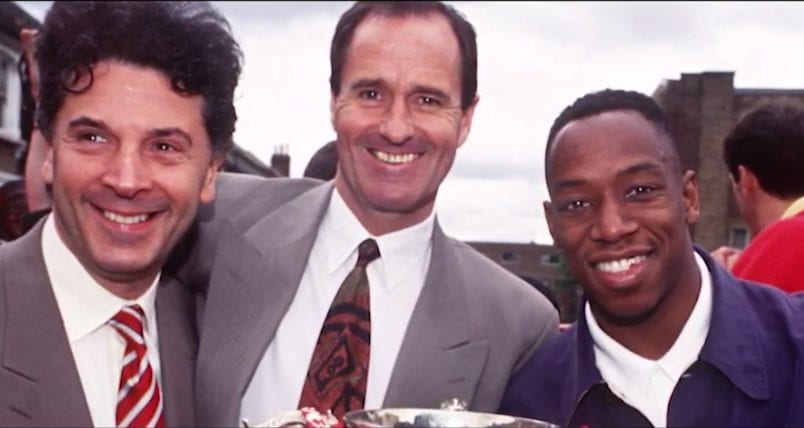In the UK, the date of October 1 is key.
That’s when the government would wish for fans to be able to attend Live Events again, after a lockdown that started back in the middle of March.
As the Premier League chief executive Richard Masters said, ‘Football is not football without fans and the Premier League won’t be fully back until we have fans supporting their teams, in person, in our grounds.’
But standing in the way is a regulatory regime called the Sports Grounds Safety Authority (SGSA). This is the government agency responsible for ensuring safety within stadiums in England and Wales.
The SGSA have issued 85 pages of draft guidelines to help football clubs – and other sports venues - come up with acceptable social-distancing plans. No club will be approved if their plans fall short.
All of this has been backed up by courses, videos and webinars, with further guidance coming from the Football Safety Officers Association and the leagues. Layered on top of that, the leagues and FA have been taking part in regular meetings with the Department for Digital, Culture, Media and Sport, public health experts, other government departments and other sports, while most clubs have also been consulting their trusts and affiliated fan groups.
The good people at The Athletic wrote an intriguing article over the weekend which looked at the real conundrum facing both sports bodies and public health regulators in an environment where no stadium is the same, and each match might generate a greater or smaller number of home and away fans.
Elements of the match day experience that the SGSA want clubs to consider and potentially regulate include ‘where we park, where we meet up, how many pints we drink, when we arrive at the ground, who we sit with, what we eat, when we leave.’
Which brings us to toilets.

Dr Hunt has spent the last decade studying how people move through busy places such as airports, hospitals and train stations. She is one of the UK’s leading authorities on evacuation modelling, using data and software to work out the safest ways to get us out of buildings in a hurry.
This is her assessment of the problem according to The Athletic:
‘I have learned a lot about urinal behaviour — which isn’t something I thought I would ever have to say. Maintaining social distancing with those big [urinal] troughs is going to be difficult. And then you have the handwashing, which we want to encourage but I’m told is not something many fans have been doing.
‘So clubs will have to look at one-way systems through the toilets, Perspex screens to create gaps and hand-sanitiser dispensers. Some clubs already do some of that and some will be able to do it without too much trouble.’
Dr Hunt’s specific remit, why she wants to know what does and does not happen in the men’s loos at half-time, is that the company she works for, Movement Strategies, is trying to find the optimum solution for the phased return of fans in the coronavirus era.
‘But every ground is different. Some will have to move the concourse outside the ground and bring in lots of Portaloos, some just don’t have the space to do that … the concourses will probably be the biggest factor in working out what each ground’s new capacity is, so toilets are important.’
The Athletic says most clubs hope to operate with capacities of about 30% of their usual maximum, ‘but no two stadiums are the same in terms of dimensions, design and surroundings’.
Some clubs, blessed with roomy concourses, wide staircases and plenty of space outside the ground itself to put in the type of temporary concession stands and Portaloos you might expect to find when they are staging concerts in the off-season, will achieve that target relatively easily.
In this category would fall Premier League teams like Brighton & Hove Albion, Manchester City and Tottenham Hotspur.
But then there are those whose more traditional grounds with tight corners, pinch points and other buildings built close up to the stadium would act as a cut off and limit the ability to go much higher than 20%.
At 20% capacity some clubs may have a financial viability issue, especially as those are likely to be clubs further down the league pyramid. Clubs like Crystal Palace, Everton and Newcastle United are those, according to The Athletic, might not reach the 30% mark under the current guidelines.
In a piece about English football and toilets, credit always has to be paid to Arsenal vice-president David Dein who was the first to lead the struggle against terrible toilets in English stadiums.
In 1972, nine years before his purchase of a 16.6% stake in Arsenal, Dein, who was then the owner of the international trading company London and Overseas Co., ended up at the Miami Dolphins match. He was not particularly struck by the Dolphins game but he was awestruck by the Miami Orange Bowl Stadium.
‘My eyes opened, said Dein, pictured left with Arsenal manager George Graham and striker Ian Wright. ‘They sold the match in such a way that it became more than 60 minutes of football. The game was an event for the whole family, good shops worked at the stadium, and you could have a decent lunch in the cafeterias. Even the toilets were comfortable.’

The contrast with the standard of English stadium toilets was incredible. Dein scolded his fellow team owners for their primitive design, poor service and insufficient quantity, and believed that it was bad restrooms that embodied all the flaws of English football.
Before the launch of the English Premier League, the half-time break lasted only ten minutes, and many fans were not able to queue for a urinal so simply relieved themselves against a wall or in a toilet sink.
After five years of Dein’s lobbying in England, the break was increased from 10 to 15 minutes and, in 1995, an amendment allowing a half-time break not exceeding 15 minutes was adopted by FIFA.
According to architect Chris Lee, who helped remodel Arsenal’s Highbury stadium after the 1990 Taylor Report was released, Dein obsessed over restrooms from the very beginning of the project. He ordered twice the number of toilets be installed than required by the standards. His reasoning: ‘If fans drink beer, tea and coffee before the match, they should have enough urinals during the break.’
Seems very simple.
Two years ago Scorum’s report on Premier League toilets drew attention to amateur experts Diana Marson and Melanie Riley. Both worked for the NHS and in the season 2016/2017 they drove around all the stadiums of the league, making up their rating.
First place went to Crystal Palace (10/10), whose toilets, according to Marson and Riley, were more like restrooms in hotels than in a stadium. Arsenal (9/10), Manchester City (9/10), Manchester United (8/10), Stoke City (8/10), Chelsea (7/10) were also among the leaders, with West Brom (7/10), Burnley (6/10) and Liverpool (6/10).
Leicester, Bournemouth and Tottenham [before the new stadium] have problems with restrooms and got only 4/10. Worse - only Watford (3/10) and Everton (2/10). The experts said before an Everton home match they would recommend going to the toilet at home: ‘the toilets are so small that you cannot get to the toilet, if someone washes his hands!’


